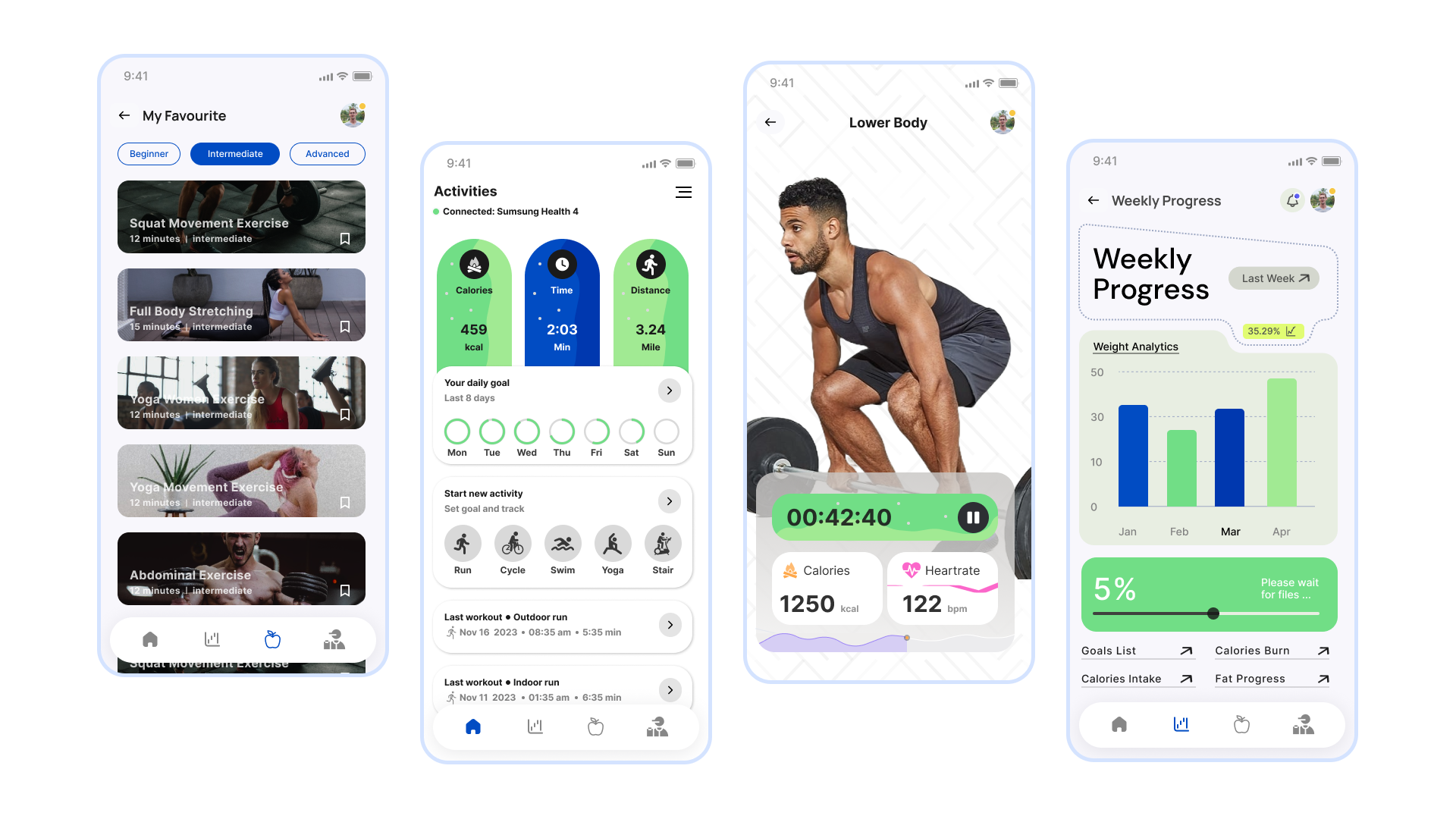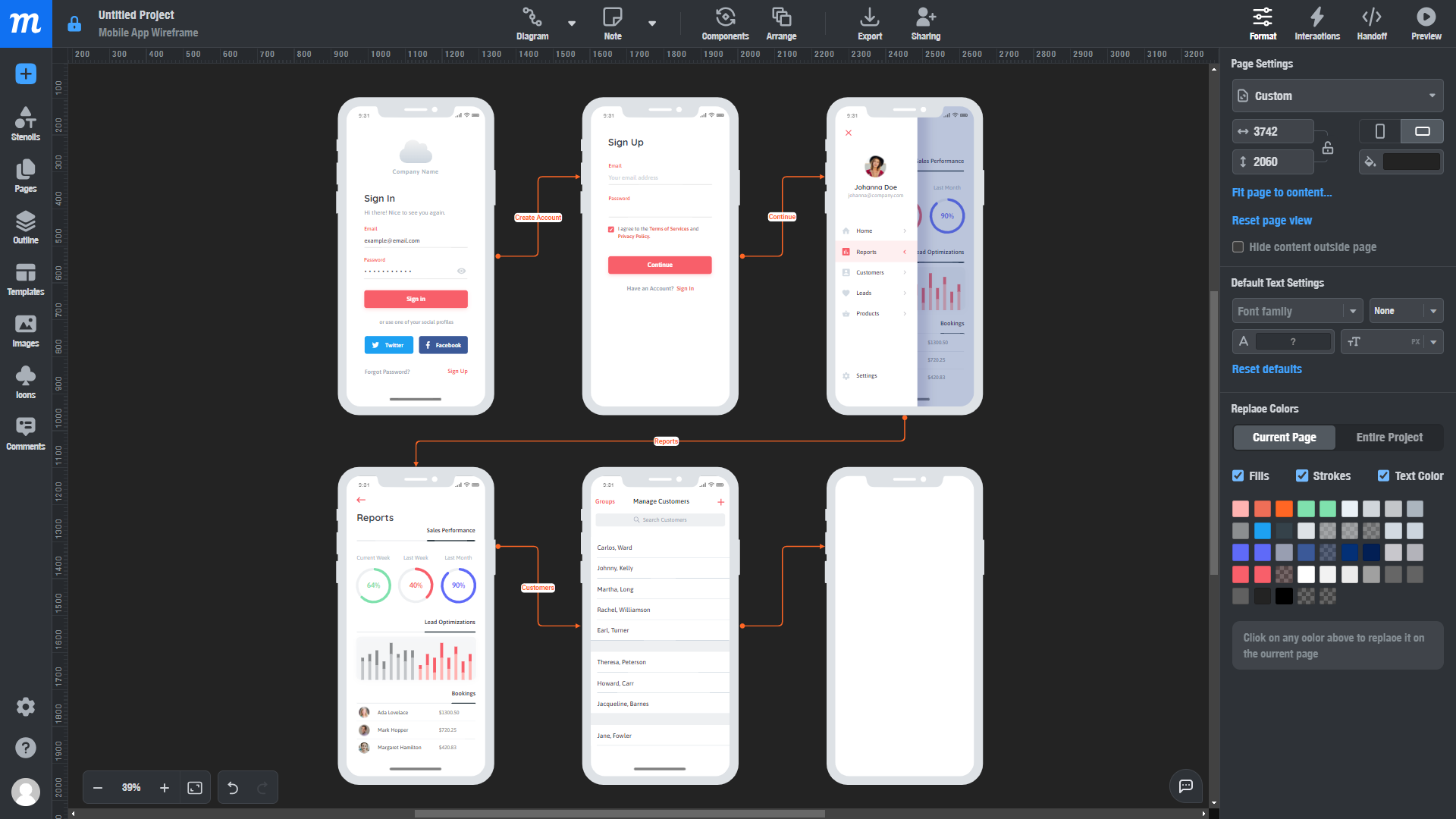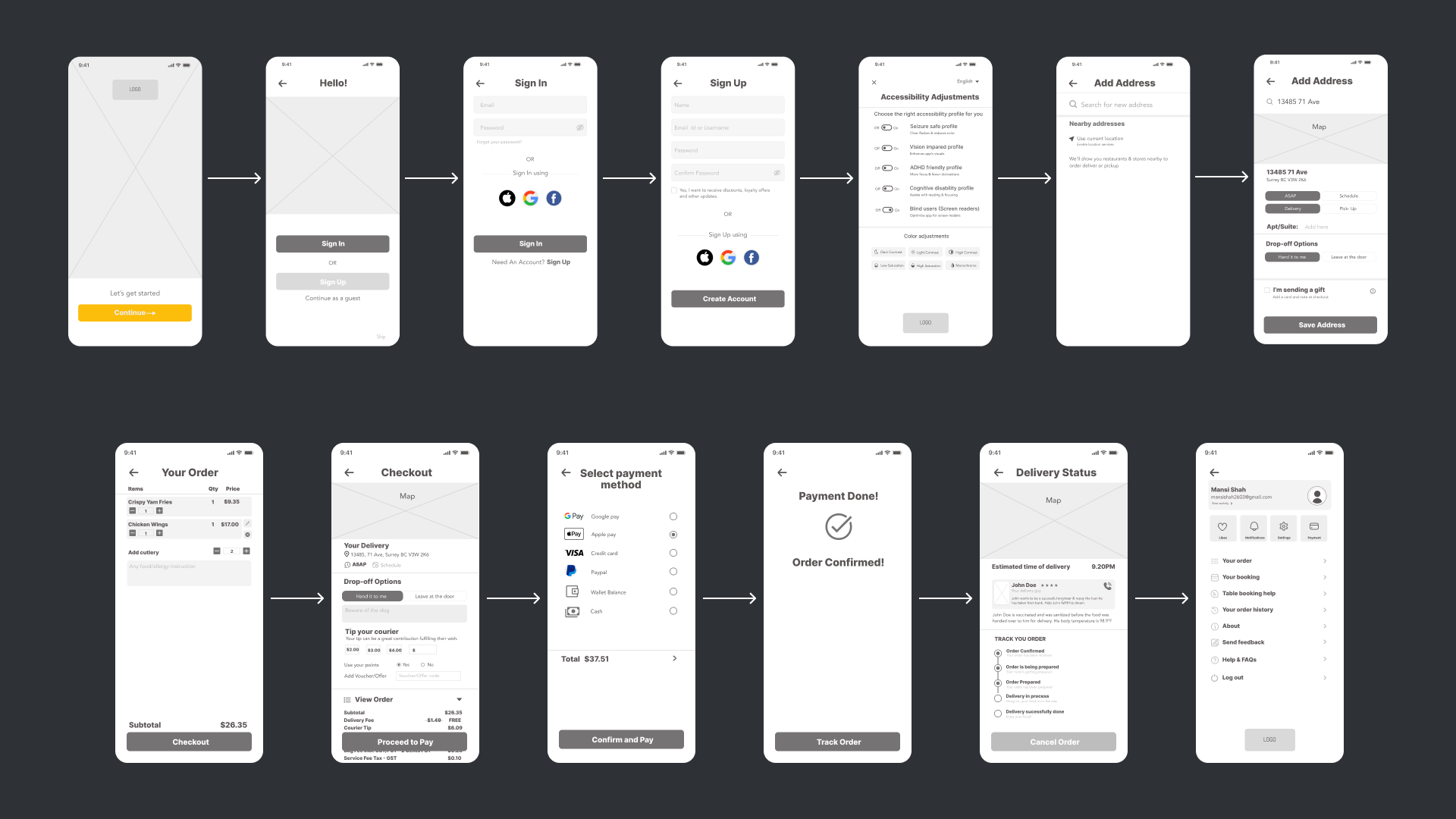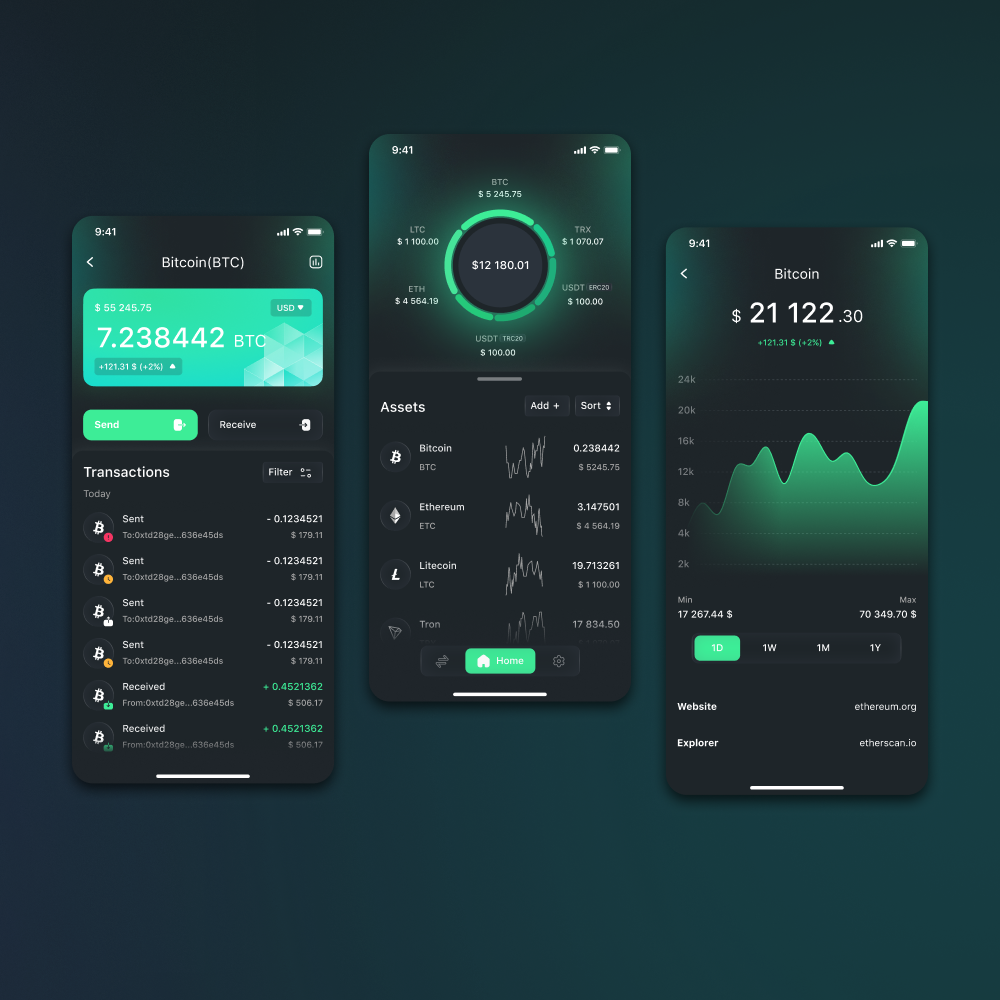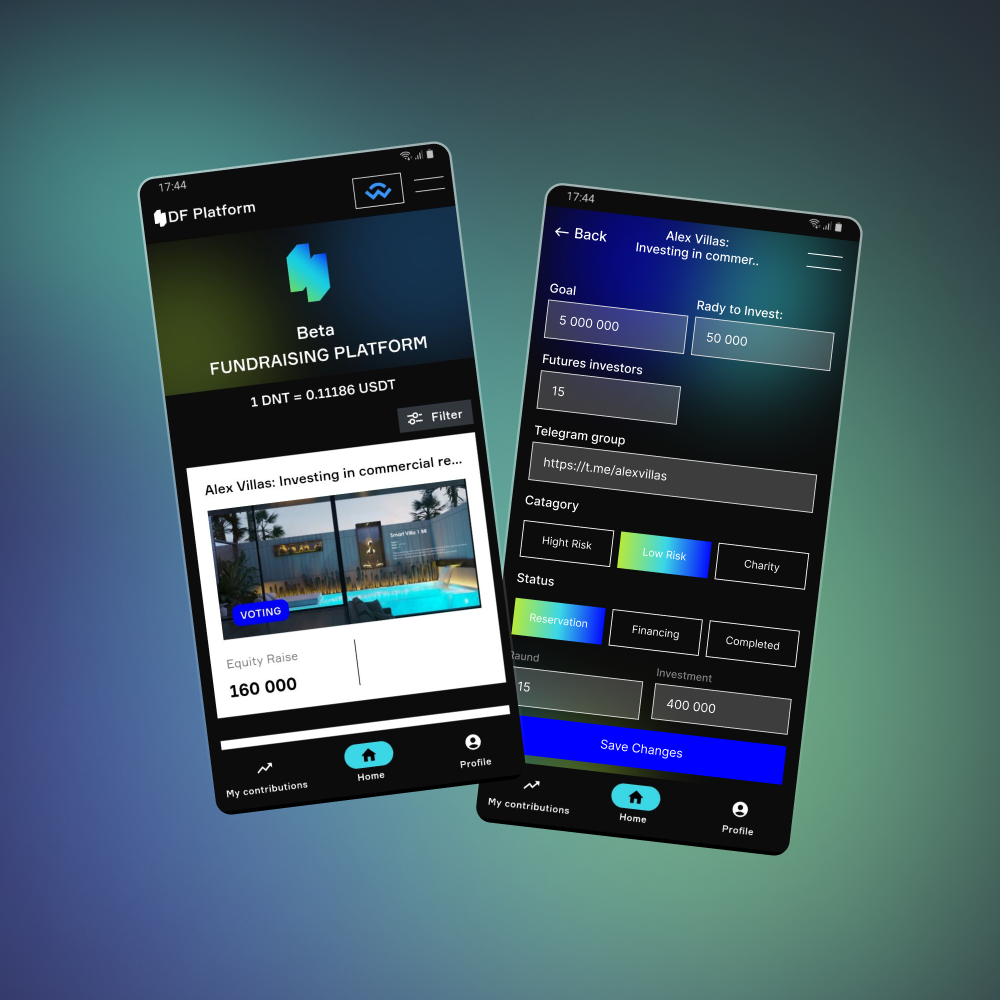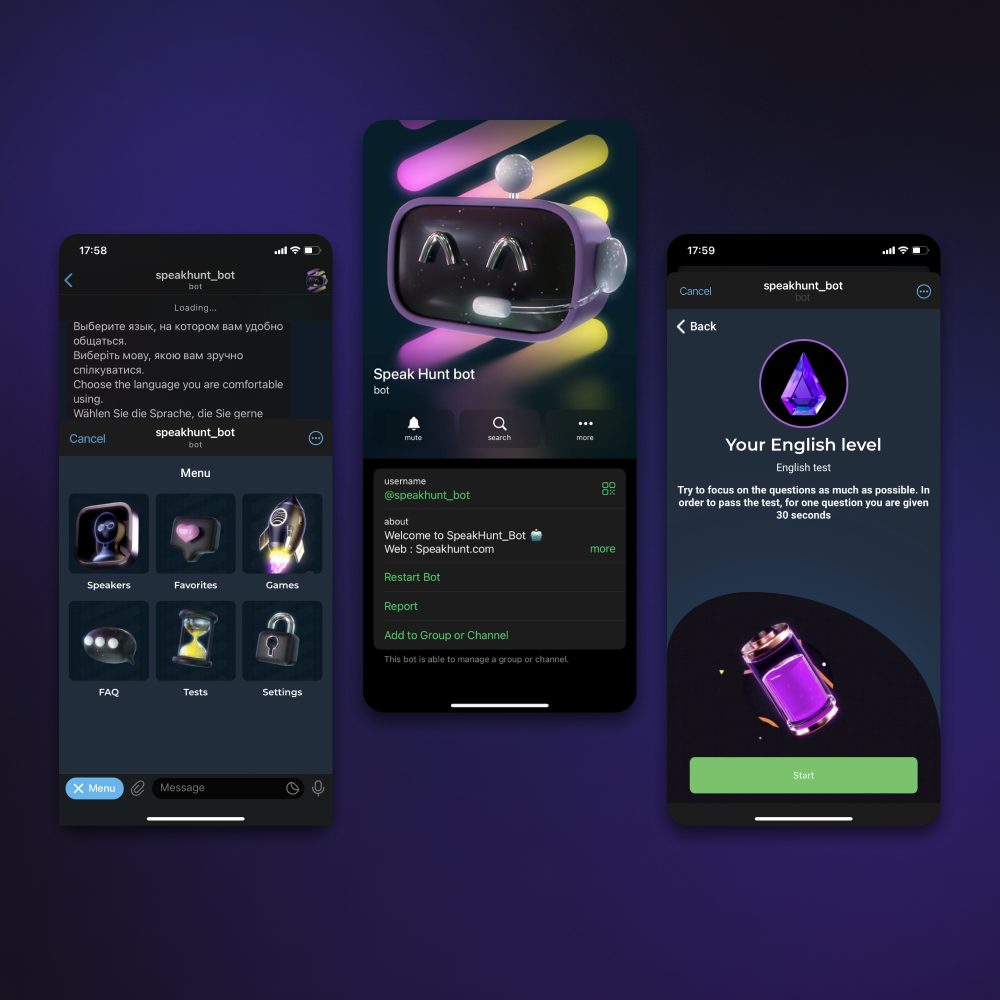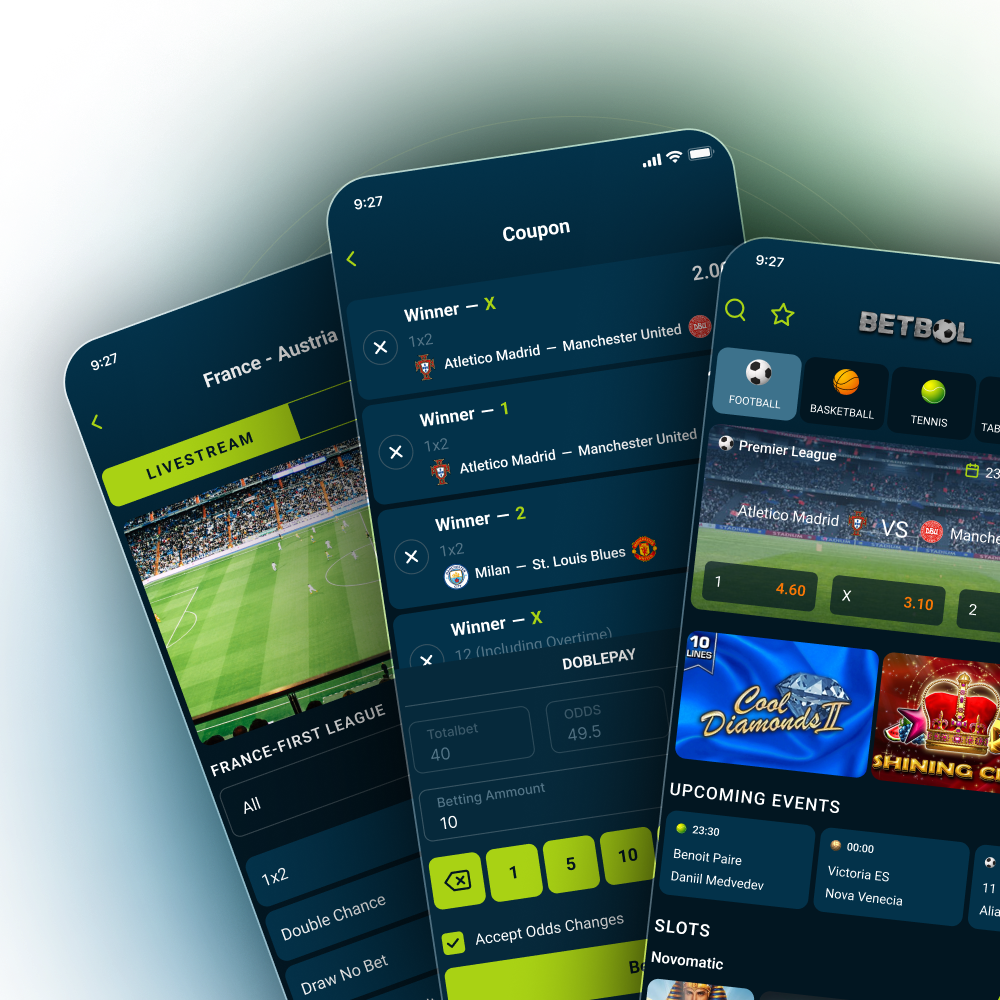








PWA applications
Progressive Web Apps are the best of websites and mobile apps.
A PWA (Progressive Web App) is a web application that is at the intersection of websites and mobile applications, combining their best features. PWA sites are built using HTML, JavaScript, CSS, and in the browser look like a regular site, but interact with the visitor like a mobile application. They are connected to mobile applications by working in offline mode, which is provided by data caching. PWAs can be installed on the desktop of a mobile phone without having to develop multiple versions of each operating system separately. PWAs, depending on the specification, can request access to the camera, geolocation, and microphone to instantly provide the user with the most convenient solution to their need.
Compared to a regular website, Progressive Web Apps provides access to application pages via links through a web browser. Applications can be launched on any device, and are also optimized for search engines with the help of SEO, which allows you to influence their ranking in search results. Thus, Progressive Web Apps are applications that are developed on the basis of web technologies, while having functionality and usability comparable to native mobile applications. Such synergy brings many advantages for business, as it simultaneously ensures user retention and increases revenue. Thus, a study by Forrester showed that companies using Progressive Web Apps can expect to increase the average time users stay on the site by up to 30%, which leads to increased sales and revenue. A study from Adobe found that implementing Progressive Web Apps can lead to a 37% increase in revenue for businesses due to improved user experience, conversions and customer retention due to fast loading times and offline access. A Google study showed that using well-designed Progressive Web Apps can increase conversions by up to 52% and reduce page load times by 80%.
Realizing this, many large companies have switched from traditional web applications to progressive ones. Twitter has developed a PWA version of its program - Twitter Lite, which ensures fast loading and availability even with a slow Internet connection. Pinterest — to improve the user experience and increase the ease of use of its service on mobile devices. The chain of coffee shops Starbucks presented its version, where you can order drinks and find the nearest coffee shops even without access to the Internet. Spotify has released a progressive web application where you can listen to music, create playlists and get personalized recommendations, even without installing the native application. At the same time, what technologies provide such a wide functionality?
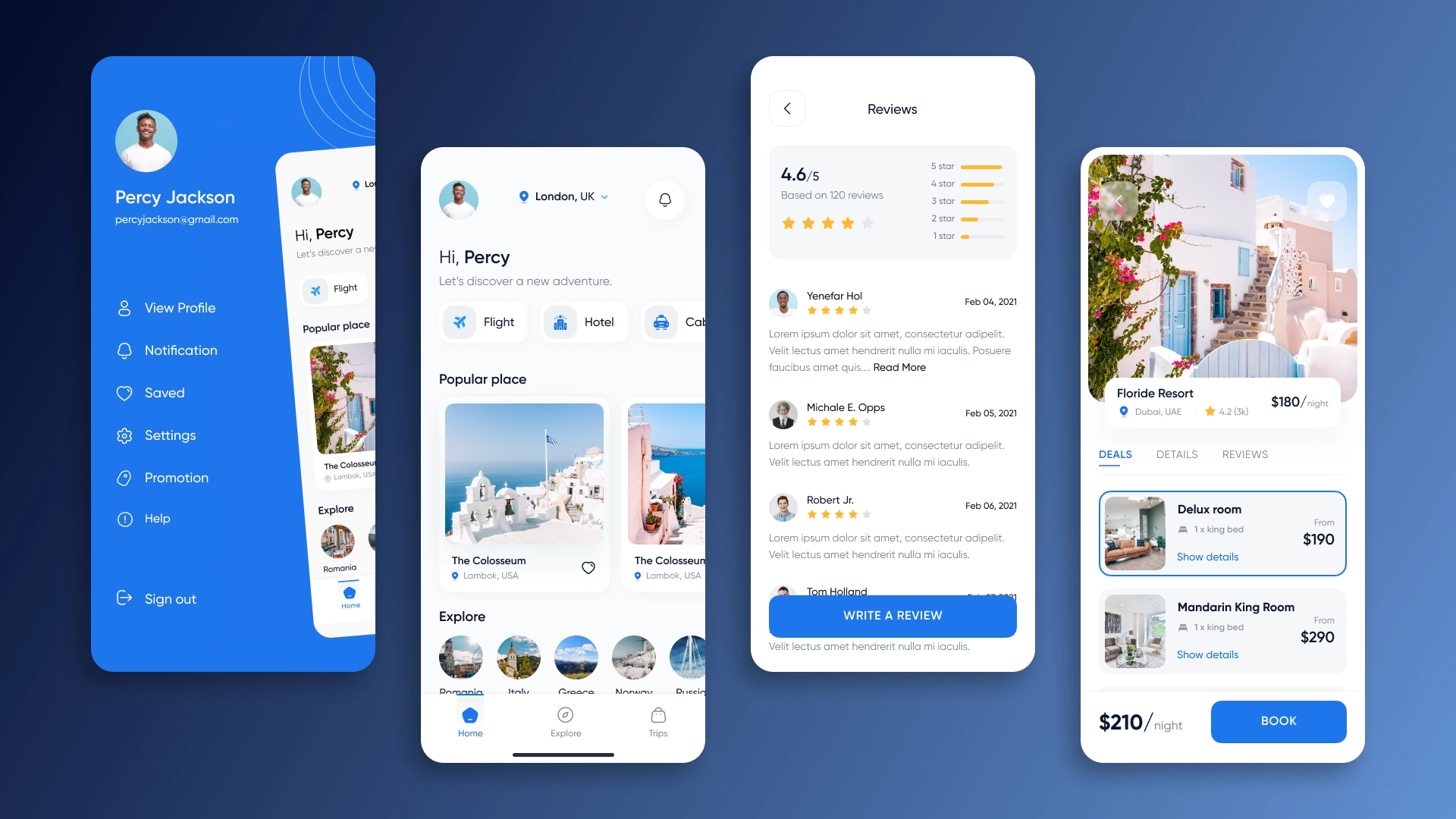
Basic elements of a PWA
Combining the benefits of websites and mobile apps is achieved through a number of key functional elements: Service Workers, Web App Manifest, and App Shell.
Service Workers - scripts that run in the background, handle network requests, notifications, and resource caching. You can say that they act as intermediaries between the network and the application. Thanks to the "workers", the PWA can run in the "background", which increases the download speed. All the key metadata of a progressive web application: name, description, icon and colors are stored in the Manifest . This is a JSON file that can be used to install a PWA on a device's home screen, giving the impression of a native app.
The HTML, CSS, and JavaScript required to display the user interface of the application reside in the App Shell . The shell of the program allows you to quickly and responsively interact with the interface, even with a slow Internet connection. Application and data security is ensured by the HTTPS protocol, responsive design is responsible for adaptation to the resolution and performance of different devices, and "worker" scripts and the Notification API are responsible for notifications.
Key benefits of progressive web applications
Progressive Web Apps provide a wider audience reach, because they can be used on any devices and platforms. At the same time, interaction with them is much faster thanks to the use of Service Workers and resource caching.
Greater audience reach is also achieved through the adaptability of Progressive Web Apps. They can be run on a variety of devices and screen resolutions, including smartphones, tablets, and desktops. In terms of improving the user experience, it is achieved through fast loading, which reduces the bounce rate and increases conversion. Another plus is offline access. If at the moment the user's Internet is lost, he can still continue to work with the application.
Push notifications, which can come even when the user is offline, will help to improve the interaction of the brand with the user and the engagement, and the analysis of data on the user's behavior and preferences will help to prepare personalized offers. As a result, the implementation of PWA in the business naturally increases the conversion and retention of customers, as well as expands the audience, which leads to an increase in the profit of the business.
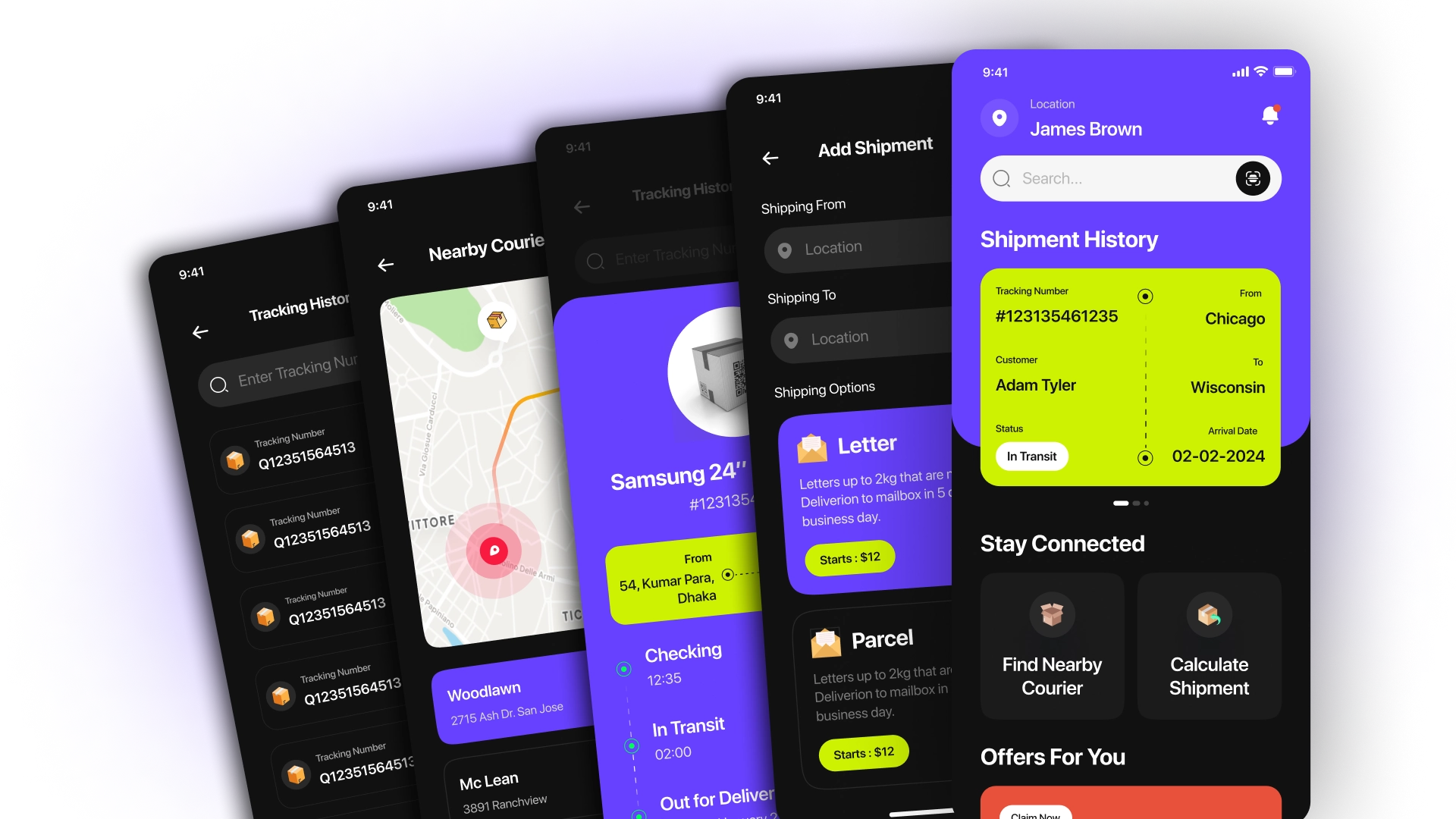
What problems does a PWA solve?
By correctly using the key advantages and functional features of progressive web applications, you can solve a number of issues faced by businesses:
- will increase conversion and revenue by reducing the waiting time for loading, which reduces the percentage of bounces;
- increase user engagement thanks to fast and uninterrupted work even with low Internet speed, as well as push notifications;
- reduce development costs, since cross-platform applications do not require the development and support of separate applications for different operating systems;
- increase security and fault tolerance thanks to the HTTPS protocol, encrypting data that protects the privacy of user information (bank cards, personal and personal data, etc.);
- improve the position of the brand in search results, ensuring good indexing by search engines due to its architecture and under the condition of proper SEO optimization;
- save space on the user's device, because they do not need to be installed. In addition, they load less memory and resources, which increases their productivity and efficiency of use;
- easily scalable. Because progressive web applications are developed using standard web technologies, they are easy to scale as your business grows;
- update without the need to install. PWA functionality is updated on the server, so users automatically receive the latest versions of the program without the need to manually install updates.
Where you can use PWAs
Progressive Web Apps can be useful in many areas of business that involve an online presence. Here are just a few of the most successful examples:
- Hotel reservation services, programs for finding restaurants and entertainment. In this area, a business can create an application in which users can view offers for bookings without access to the Internet, receive notifications about special offers and discounts, implement integration with maps to find the nearest objects.
- Banking applications, payment systems. Clients will receive a quick download of the program and a responsive interface for operational financial management, the ability to work in offline mode to view the balance and transaction history, and send notifications about the movement of money.
- Platforms for learning. Students will be able to work with educational materials offline, receive notifications about new courses and materials, personalized offers and tasks for students.
- The sphere of health care. Patients will have quick access to medical services and medical history, will be able to receive notifications about an appointment with a doctor or the need to take medication.
- Logistics and transport . The logistics company will have quick access to information about cargo and transport, the team will be able to track the status and route without connecting to the Internet, and will also be able to send messages about the status of the order or changes in the schedule.
- Production of goods . The ability to access data on production processes and warehouse stocks in real time, notifications of emergency situations or changes in production plans.
- Sports and fitness . Tracking physical performance and achievements without the Internet, sending messages about upcoming workouts or classes, personalized training and nutrition recommendations.
Stages of PWA development
Progressive Web Apps are developed by a full-fledged team of specialists in several stages, which begins with close communication between the development team and the Product Owner.
Research
At this stage, the goals and requirements for the application are defined. The development team, together with the customer, determines the goals that the application should achieve and what specific business tasks to solve. Based on the goals and requirements, a work plan is developed, which includes the distribution of tasks, deadlines and a preliminary estimate of costs.
Designing
At this stage, designers determine which elements will interact with each other and in what way. Calculations and algorithms are created that the application will use to process data and perform certain operations in the application.
In addition to the technical part, the visual part is also projected. Designers develop layouts on which buttons, input fields, images and other elements are placed. On the basis of prototypes and mockups, the final design concept of the program is determined, which meets the goals of the project and is agreed with the customer.
development
At this stage, developers determine the architecture and structure of the program based on approved design layouts and requirements, determine the optimal technology stack that will be used in the work. The user interface and functionality of the application is created using CSS, HTML and JavaScript. Python, Java, PHP or Node.js are used to create the server part,
If interaction with other applications or services is necessary, developers create APIs using various frameworks: Ruby on Rails, Django REST, or Flask. All generated application code is stored in a version control system such as Git for easy tracking of changes made to the code.
Testing
After the development is completed, the application is submitted to QA to identify and correct errors. Front and Back parts of the program undergo debugging, which can consist of module testing of individual components, integration testing of the interaction between components, and system testing of the entire application. Separately, it is worth highlighting load testing, which checks the performance of the program under high loads.
Optimization and deployment
Based on the test results, the program code can be optimized to meet the requirements, after which the program is placed on hosting and the server infrastructure is configured.
How to install PWA on a smartphone
When opening the service in any browser, the user will be offered the option "Add to main screen" or "Add to desktop". After that, the browser will prompt the user to create a shortcut to the application on the home screen, as well as the option to choose a name and icon for the shortcut. After confirmation, the shortcut will appear on the main screen of the smartphone, providing quick access to the application at any time.
After installing the PWA on the home screen of the smartphone, the user can launch the app just like a native app by clicking on the shortcut on the home screen. The program will open in full screen mode and provide the user with access to all its functions.
How Avada Media can help with PWA development
Avada Media is a company with more than 10 years of experience in developing web applications. Our team of middle and senior level specialists has deep knowledge and experience in creating PWAs that meet modern standards and requirements.
We offer a full cycle of product development, starting with research and planning, interface and user experience design, backend and frontend development, testing, deployment and support. Our approach to development is based on an individual approach to each project, value for money, consideration of customer needs and focus on achieving business goals.
-
What is the difference between progressive web apps and regular web apps and native mobile apps?
PWAs combine the advantages of both web applications (broad accessibility through the browser) and native mobile applications (offline functionality, fast loading, etc.)
-
What are the benefits of progressive web applications for users and businesses?
The main ones are fast loading, stable operation in offline mode and improved user experience.
-
How long does Progressive Web App technology take?
PWA development time can vary depending on many factors, such as complexity of functionality, design, security requirements. On average, PWA development can take anywhere from a few weeks to a few months. At the same time, it is important to consider that the development process includes not only writing code, but also designing, testing and optimizing the application



















